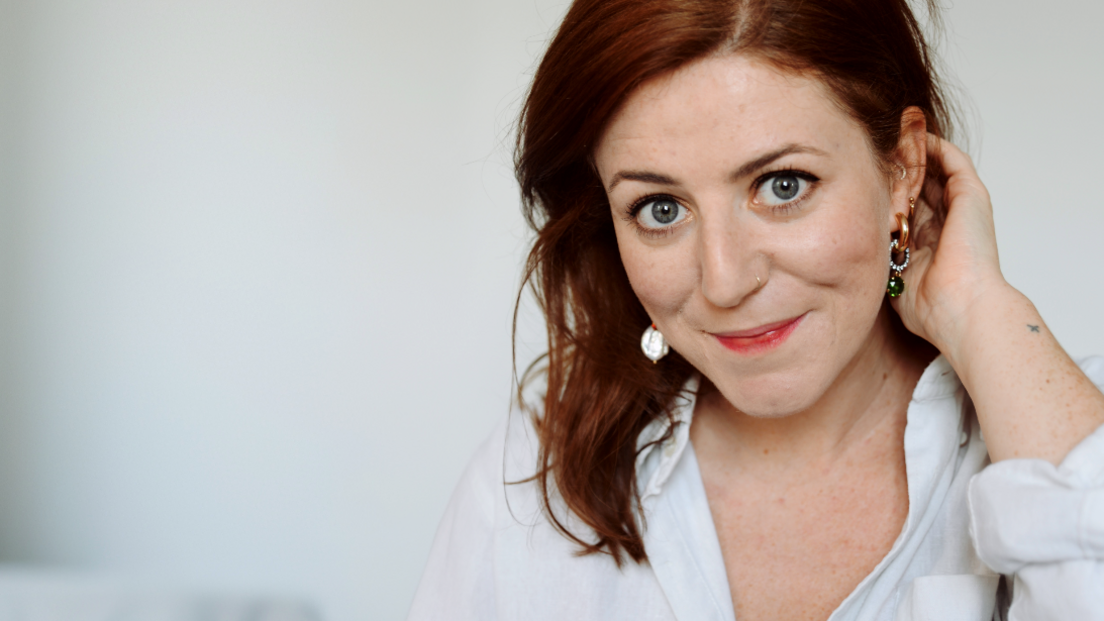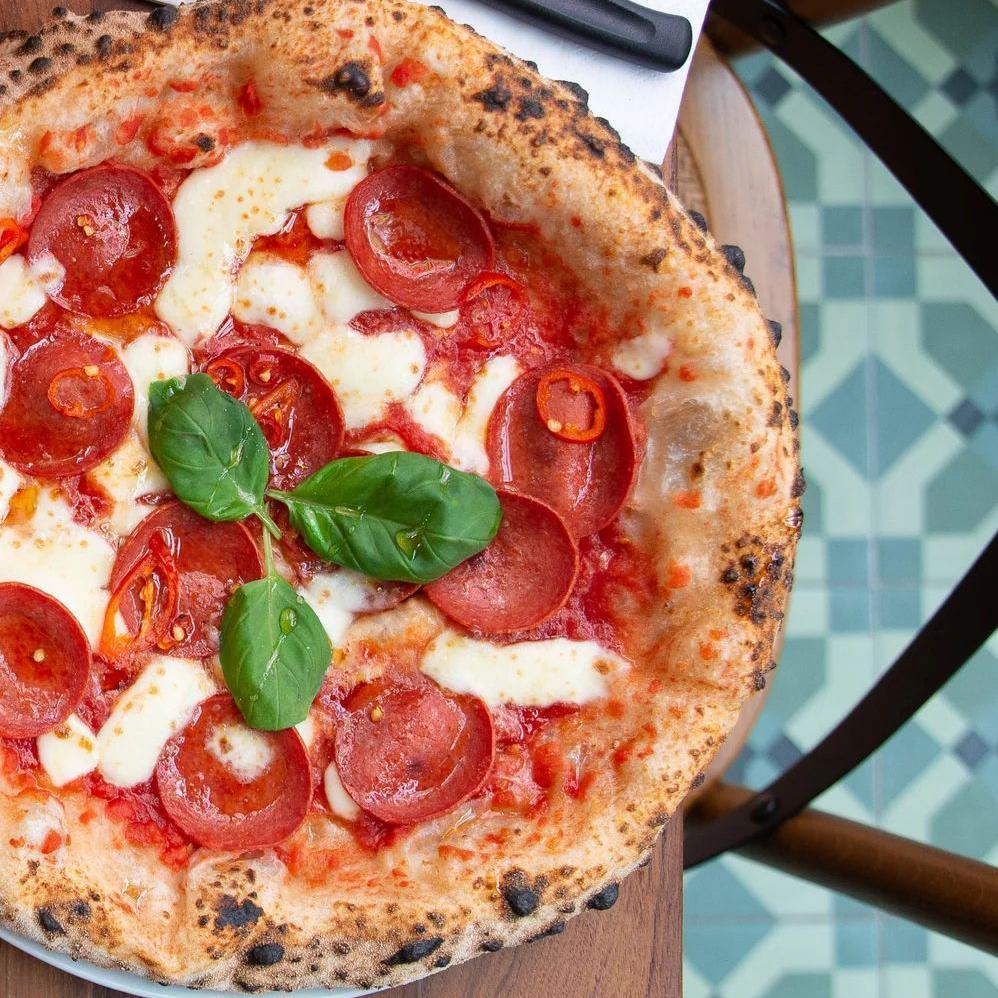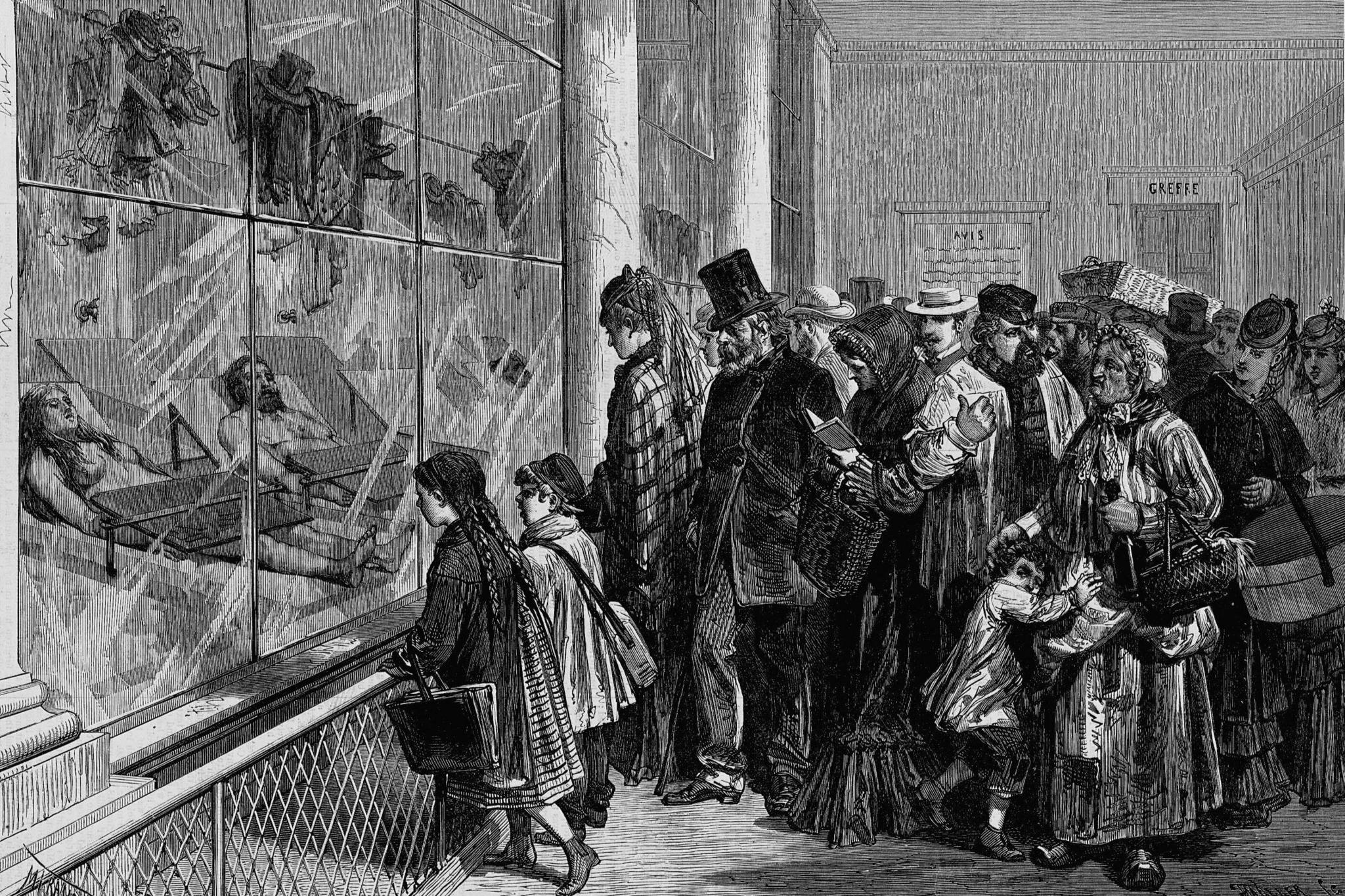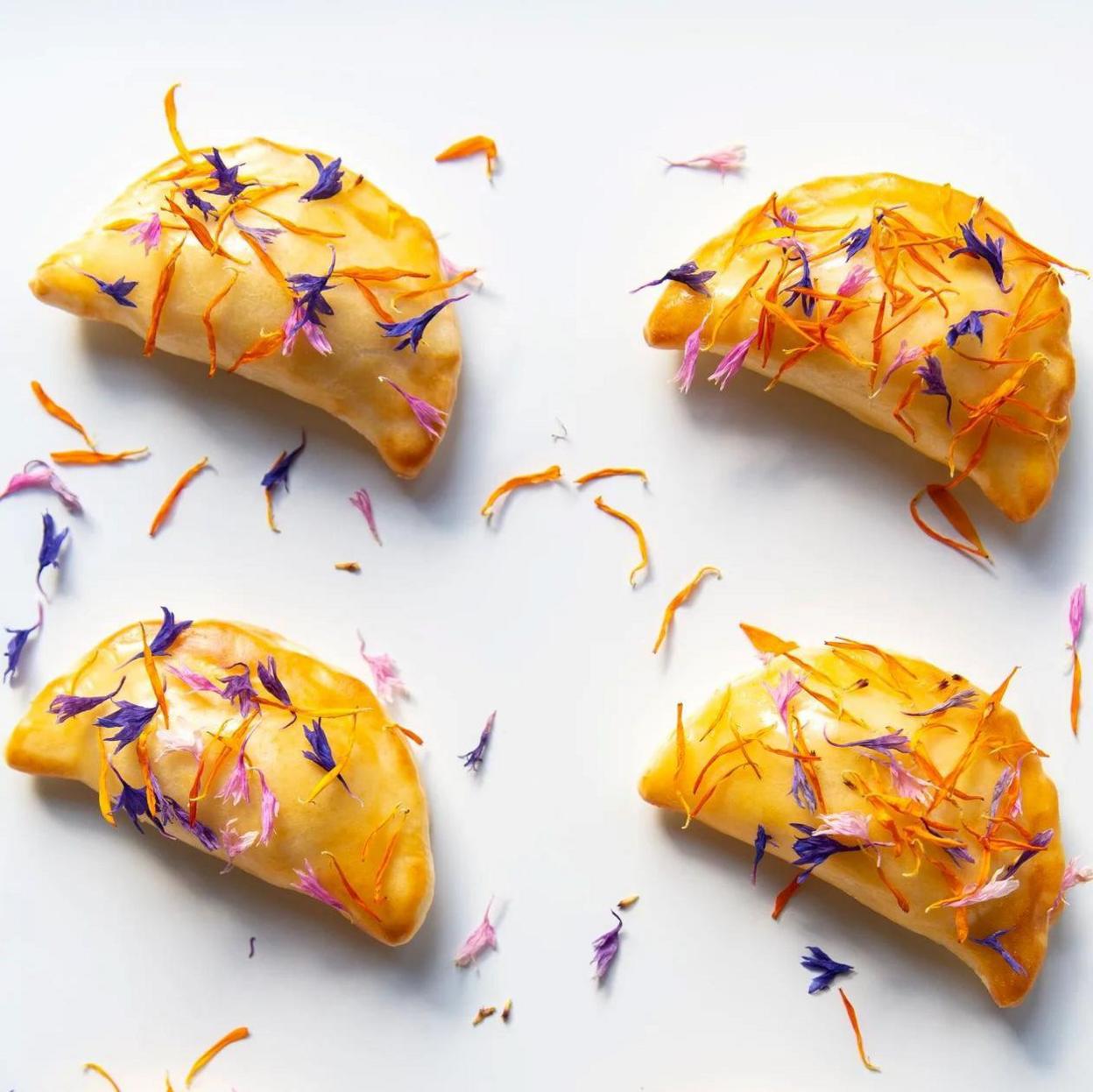I photograph food to escape my harrowing research

Catriona Byers is an expert on 19th Century morgues in Paris and New York
- Published
Catriona Byers is a historian who moonlights as a food stylist.
She is an expert on the dark histories of 19th Century morgues, but also photographs restaurant pizzas and plates of delicately arranged veg for magazines and food promotions.
"Working with food is fantastic because it is different from the subject of my research, which can be really harrowing and I get very emotionally involved in it," said Dr Byers, who grew up in Kirkcaldy in Fife.
"But it did creep into a job styling some cereal boxes. There was a Rice Krispy that looked like a skull. I thought: 'Come on, stop seeing skulls everywhere'."
Paris-based Dr Byers' academic research is largely focused on urban death, policing, medicine, forensics, crime and photography from 19th Century to the present day.
She is a regular guest on BBC podcast After Dark: Myths, Misdeeds and the Paranormal, and her first non-fiction book, Morgue, will be published in the UK and US in 2027.
The story of how she ended up juggling photographing food with her weighty historical research goes back to her student days.

Dr Byers said styling and photographing food had helped to support her while studying for a PhD
She studied history and French at the University of Manchester, writing a final year dissertation on peculiar uses of photography in 19th Century Paris.
She compared photographs of women diagnosed with hysteria, a condition later debunked, with those taken by spiritists who were trying to make photographs of dead people appearing behind grieving relatives.
"The hysteria photographs are bizarre. They are haunting and beguiling," said Dr Byers.
She added: "I had a bit of a difficult time towards the end of my time at university and when I left I was like: 'I'm done with studying forever. It's over'.
"I ended up falling into the food world, moved to London and became a food stylist."
Food styling involves cooking food and arranging it on plates so it can be photographed for magazines or advertising.
Dr Byers had dabbled in the field while at university.
"I had a food blog just for fun and made weird pictures with food, and made up recipes," she said.
She secured an internship with a newspaper's food magazine and also worked for a time in Paris.

Dr Byers has researched the history of a morgue in Paris where bodies were placed on public display
Dr Byers said: "After a while I started to get a bit of an itch to study again and I found a Masters programme that I could do part-time and got a scholarship for."
The course was urban history, and while studying some assigned reading she stumbled on details about a morgue in Paris where dead people - brought there to be studied or kept until they could be buried - were put on display behind glass.
"It was not only a significant building for medicine, policing and death management, but it also became this hub for true crime and a huge tourist attraction," said Dr Byers.
"By the end of the century a million people a year were visiting."
She added: "I think my mind just exploded. I was fascinated.
"A trap door opened and everything I wanted to understand was in this building - who we remember, who we forget and the way we live."

Dr Byers said she enjoyed the practical process of making and arranging food
After completing her Masters, she studied for a PhD, researching morgues in Paris and New York from 1864 to 1914.
She funded this work through grants - and food styling.
"My day job was like: I hope I get this pizza right, and I need to get these roast potatoes just right, and then I would go home and think about addiction and murder in the 19th Century," she said.
"Food is an escape, getting to be focused on practical little details and really helpful while I'm trying to think about these theoretical questions about life and death and what it means to be a person in the world."